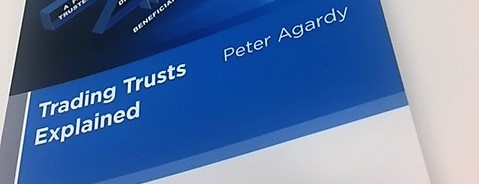This is not a review of Peter Agardy’s ‘Trading Trusts Explained’ (LexisNexis) but an alert to its availability, its release very usefully timed when the law in this area is in a state of judicially created flux. The series of recent cases that are occupying the attention of many trust and insolvency lawyers, and liquidators, are all discussed and analysed in this book.
The text is succinct and focused. Twenty seven chapters in under 200 pages – the basic principles and structure of trusts, why trading trusts have evolved, what purposes they serve, the relevant accounting standards, disputes and mediation, indemnities, creditors’ claims, disqualification of trustees, insolvency, personal liability, powers of sale, remuneration of trustees, and asset protection.
A diagrammatic representation of the differences between a trust and a company, some sample trust deeds, and a trust checklist are excellent additional features.
A pertinent item is footnote 19 in chapter 13, on the right of indemnity from trust assets. The footnote acknowledges that one of the main decisions discussed in the book, Re Amerind, is on appeal, to a five-member bench of the Victorian Court of Appeal, whose decision is reserved. At the same time, the Full Federal Court is also reserved on more or less the same issue in Killarnee: see Amerind and Killarnee: ships in convoy, or on a collision course?
The appeal judges of those courts might usefully read Peter Agardy’s text before coming to their now long-awaited and important judgments. In any event, whatever the judges decide, the book will no doubt have already explained their reasoning.





One Response
Anything that assists practitioners and external administrators in understanding the structures involving trusts is of great value. So many insolvencies now have underlying trust structures and the interraekationship of corporate and trust law has become essential